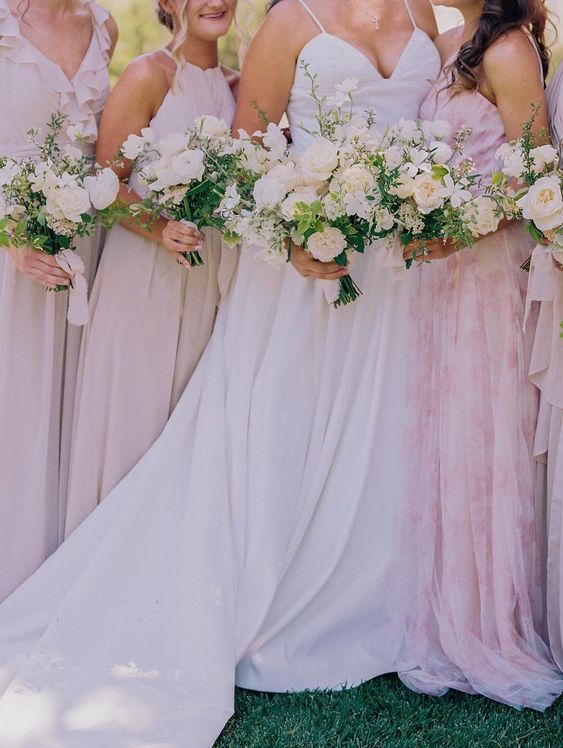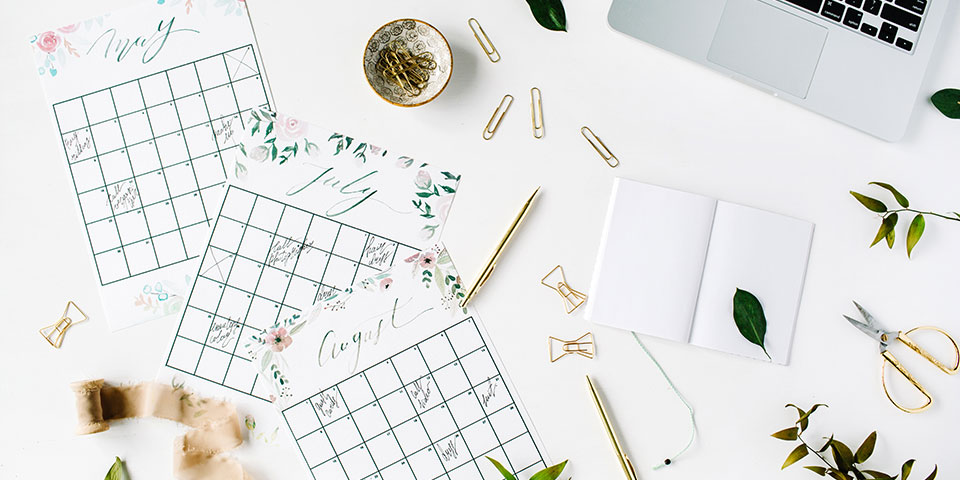The moment you’ve been waiting for has finally arrived – your partner popped the question, and you said yes! While the journey towards your dream wedding has officially begun, you’re probably wondering… what next?
We totally get that planning a wedding can seem like a daunting task, especially during the early stages. So, read on as we walk you through the essential first steps to take after getting engaged (and how to navigate a smooth transition from fiancé to newlywed!).

1. Share the News
The very first step after getting engaged will be sharing the exciting news with your closest family and friends. Whether you opt for a heartfelt phone call, an announcement on social media or an intimate gathering with loved ones, take some time to celebrate this special milestone with those who mean the most to you.
2. Plan an Engagement Party
This one is optional, but if you’re thinking about hosting an engagement party you’ll want to organize this before getting started with your wedding plans. Ideally, you should host your engagement party between 2-4 months of sharing the happy news.
Read our ultimate guide to planning the perfect engagement party here!
3. Insure Your Ring
Something else to explore shortly after your engagement is insuring your new ring. Contact your insurance provider to see if you can add it to your existing policy, or do some research into specialized jewelry insurance options. This will give you peace of mind that your ring will be covered in case of loss, theft or damage – especially if it’s on the pricier side!

4. Plan an Engagement Shoot
An engagement shoot can be a great way to get comfortable in front of the camera with your partner, while also providing you with photos that you can use for your save the dates, wedding invitations, and wedding website. You can even take the opportunity to trial a photographer you’re considering for your wedding, to see if you’ll be a good fit for each other on the big day.
5. Set a Date Range
While you may not have a specific date in mind just yet, it’s helpful to establish a general timeframe for your wedding. Consider factors such as the season, availability of key guests, how long you want to be engaged, and any special dates significant to you as a couple. Having a rough idea of when you’d like to tie the knot will guide your planning process moving forward. Read our guide on the most popular months to get married here!
6. Discuss Your Budget and Priorities
Next, sit down with your partner and have an open and honest conversation about your wedding budget and priorities. Determine how much you’re comfortable spending and roughly allocate funds to different aspects of your wedding, such as venue, catering, attire, and entertainment (our handy budget calculator can help you do exactly this!).
Identifying your priorities early on will help guide your decision-making throughout the planning process, while also ensuring you don’t sweat the small stuff. Creating a wedding vision board during the early planning stages can also be a helpful way to condense and clarify your ideas.

7. Create a (Preliminary) Guest List
While it doesn’t need to be finalized at this stage, having a rough estimate of your guest numbers will help you narrow down venue options and plan accordingly. Together with your partner (and families, if relevant), start compiling a list of potential guests you’d like to invite to your wedding. You can come back to this list later and trim accordingly if needed, or separate your guests into A and B lists if the numbers are spiraling out of control!
8. Research Wedding Venues
Now that you have a general idea of your budget and guest list, you can begin your search for the perfect wedding venue. Start by researching options in your desired location and budget range, and schedule site visits to get a firsthand look at each location.
During your site visits, make sure you gather all of the essential information such as capacity, amenities, package inclusions, parking, and availability. We’ve compiled the most important questions to ask your wedding venue here!
9. Consider Hiring a Wedding Planner (If Desired)
If you’re considering working with a wedding planner, it can be helpful to bring them on board during the early planning stages. A wedding planner will be able to assist with vendor selection, budget management, and floor plan creation, allowing you to relax and enjoy the journey to your big day!
Depending on how involved you’d like to be in the planning process, wedding planners will typically offer a range of different packages – from full-service planning to day-of coordination. Not sure which one you need? Learn the differences between a wedding planner, stylist, and coordinator here.

10. Get Organized
It’s important to find a system that works for you when it comes to staying organized throughout the planning process! We’d suggest keeping everything together to avoid getting overwhelmed, from vendor contact details to contracts and payment schedules. You may also want to create a separate email address for your wedding planning admin to prevent anything from getting lost amongst your personal emails.
A digital wedding planner (like our platform here at WedSites) can be a fantastic way to stay organized throughout the planning process. You can create a master to-do list, assign deadlines for each task, store vendor information, and manage your guest list all in one place!
11. Begin Vendor Selection
Next, you’ll want to start researching and contacting potential wedding vendors, such as photographers, caterers, and florists. Spend some time looking at examples of work online, reading reviews, and obtaining quotes to find vendors who align with your budget and vision. Once you’ve narrowed down your vendor options, you can begin scheduling consultations or in-person meetings.

The Ultimate Wedding Planning Checklist
While the above steps are the perfect place to start after getting engaged, there’s still some work to be done before the big day! From building your wedding website to creating your seating chart, check out our ultimate wedding planning checklist here for a helpful roadmap toward saying “I do!”.






